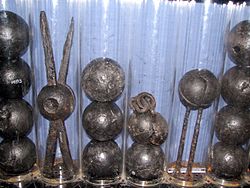| Part of a series on |
| Cannons |
|---|
 |
A cannon is any large tubular firearm designed to fire a heavy projectile over a long distance. They were first used in Europe and China, and were the archetypical form of artillery. Round shot and grapeshot were the early projectiles used in cannon.



